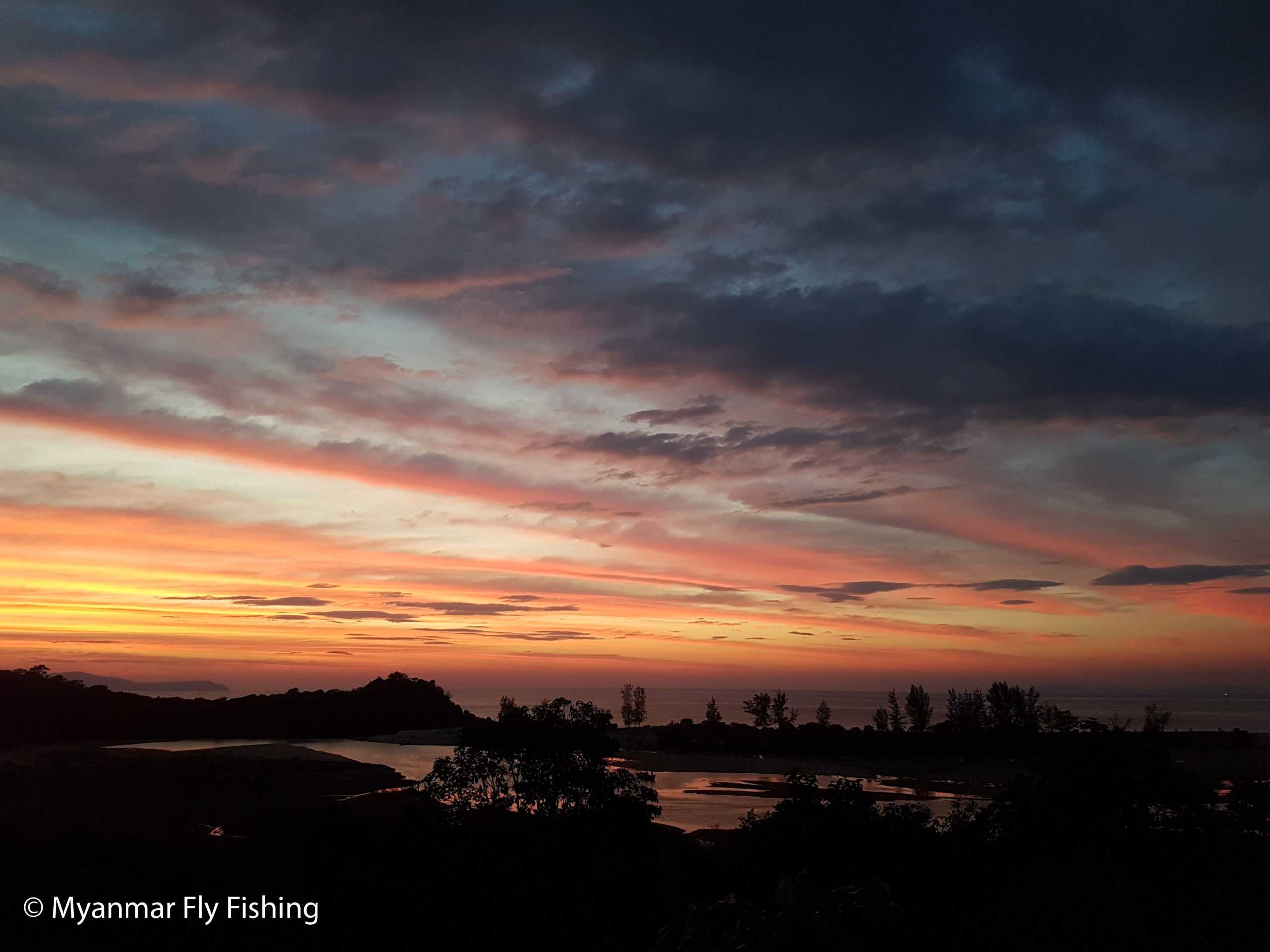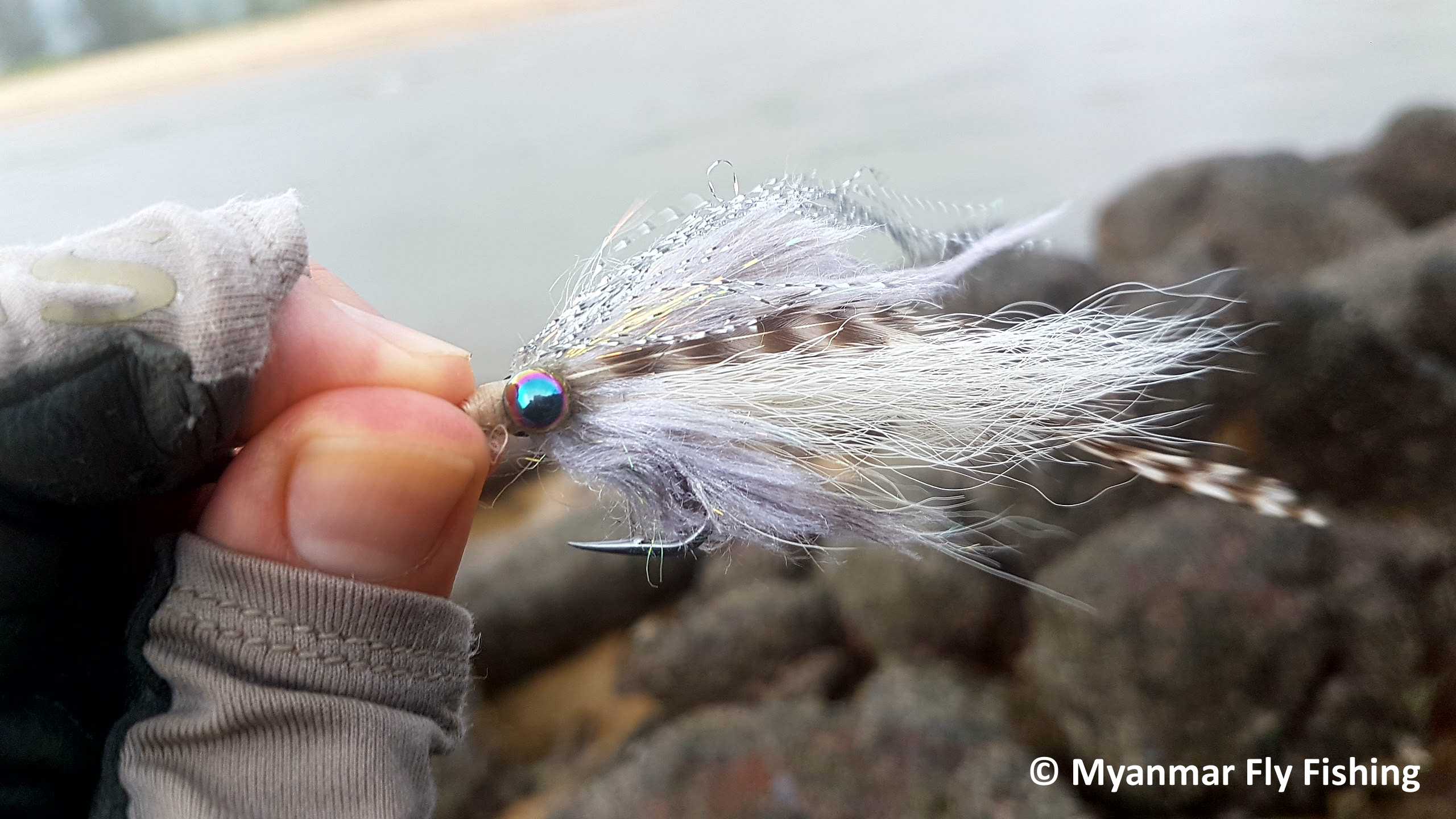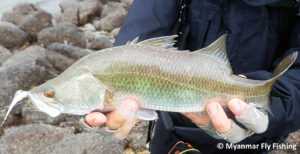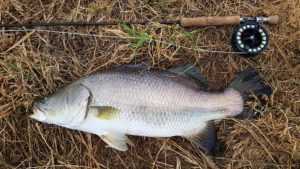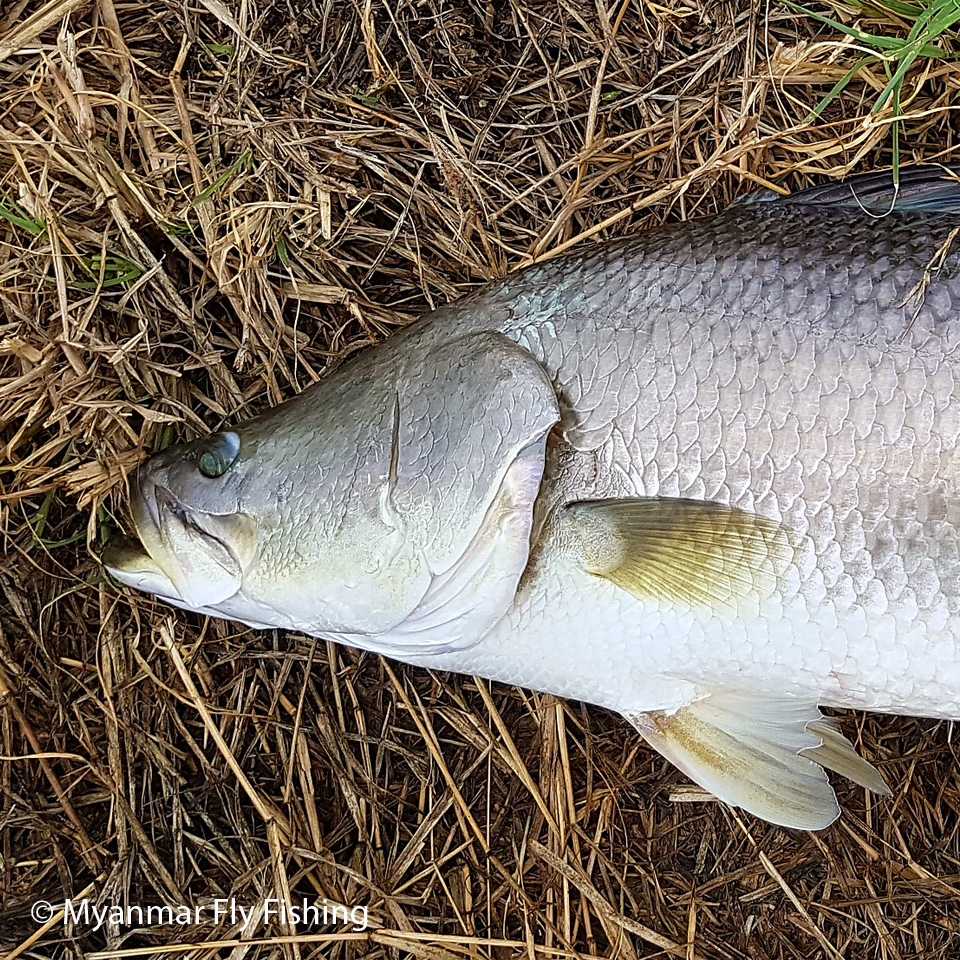
Family: Latidae
Order: Perciformes
Myanmar Name(s): Ka-kadit
Occurrence: Native
Description (Source: Wikipedia)
This species has an elongated body form with a large, slightly oblique mouth and an upper jaw extending behind the eye. The lower edge of the preoperculum is serrated with a strong spine at its angle; the operculum has a small spine and a serrated flap above the origin of the lateral line. Its scales are ctenoid. In cross section, the fish is compressed and the dorsal head profile clearly concave. The single dorsal and ventral fins have spines and soft rays; the paired pectoral and pelvic fins have soft rays only; and the caudal fin has soft rays and is truncate and rounded. Barramundi are salt and freshwater sportfish, targeted by many. They have large, silver scales, which may become darker or lighter, depending on their environments. Their bodies can reach up to 1.8 m (5.9 ft) long, though evidence of them being caught at this size is scarce. The maximum weight is about 60 kg (130 lb). The average length is about 0.6–1.2 m (2.0–3.9 ft).
Barramundi are demersal, inhabiting coastal waters, estuaries, lagoons, and rivers; they are found in clear to turbid water, usually within a temperature range of 26−30 °C. This species does not undertake extensive migrations within or between river systems.
Biology / Diet / Behavior (Source: Wikipedia)
The barramundi feeds on crustaceans, molluscs, and smaller fish (including its own species); juveniles feed on zooplankton. The barramundi is euryhaline, but stenothermal. It inhabits rivers and descends to estuaries and tidal flats to spawn. In areas remote from fresh water, purely marine populations may become established.
At the start of the monsoon, males migrate downriver to meet females, which lay very large numbers of eggs (several millions each). The adults do not guard the eggs or the fry, which require brackish water to develop.
The species is sequentially hermaphroditic, with most individuals maturing as males and becoming female after at least one spawning season; most of the larger specimens are therefore female. Fish held in captivity sometimes demonstrate features atypical of fish in the wild: they change sex at a smaller size, exhibit a higher proportion of protandry and some males do not undergo sexual inversion.
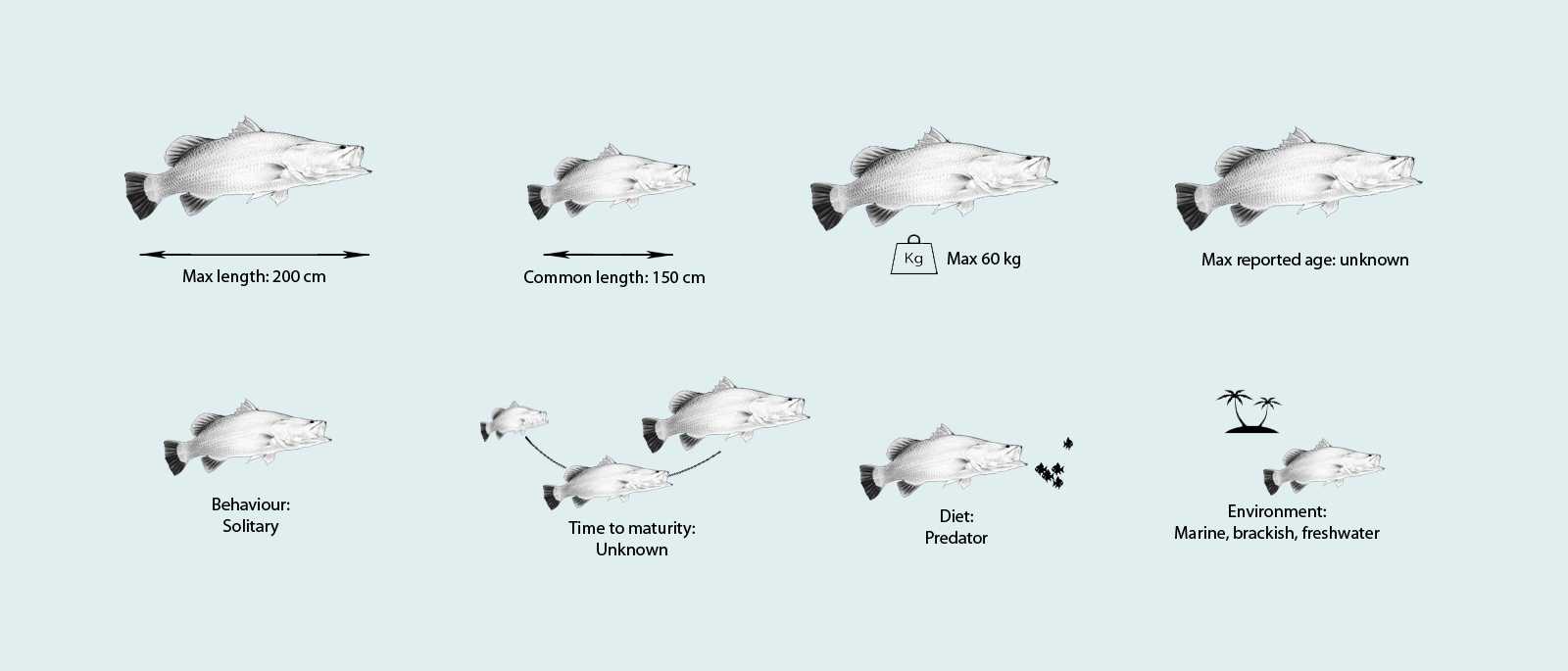
Fly Fishing For Barramundi In Myanmar: What We Understand & Know So Far...
The barramundi apprears to be an elusive species in Myanmar; it is reported by many as having been overfished by commercial fisheries, dramatically impacting wild stocks. As a result, encounters with barramundis while sport fishing are rare and occasional.
I have come across barramundis in Tanintharyi Division, in the south of Myanmar, in coastal areas with mostly salt water, away from any significant estuary of permanent river. So it seems that there may be a resident population of salt water barramundi, as the species is reported not to undertake significant migrations.
A fly immitating a general bait fish pattern in white and silver colors seems to be appealing to the barramundi which does not appear too choosy when feeding...

